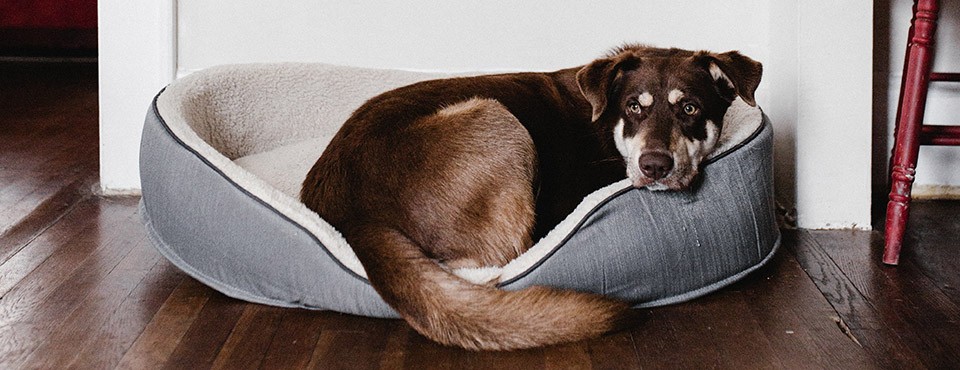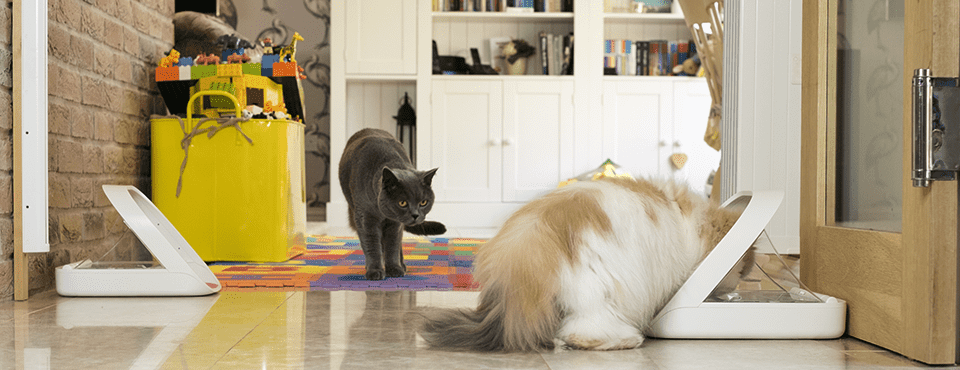Flea City 101: Where Fleas Hide In Your Home
HEALTH & PROTECTION
7 Aug, 2019
READ 5 minutes

It’s time to clear the air about fleas. Once they enter your home they are wired to thrive. Fleas are survivors. Technically, they are ectoparasites—organisms that live on and feed from other organisms to survive. You may be chomping at the bit to learn where fleas hide on cats and dogs, whether or not fleas hide in clothes or in the house, but you need to know exactly what you’re looking for.
When most people think and talk about fleas, they tend to be thinking and talking about adult fleas: the tiny brown jumping specks that can be as small as a pencil point.
Usually, people don’t think about the flea eggs that are laid after an adult flea consumes a meal, or the larvae that eventually hatch or the pupa that develops, but you need to look for fleas in all stages to protect your cat, dog, family, and yourself.

As soon as one flea consumes one blood meal, the foundation for an entire flea community begins. It’s as if that very first flea is the general contractor for Flea City and within 24 hours of consuming her first of many meals construction is well underway. One flea will lay approximately 50 eggs starting 24 hours after her first meal.
Some eggs will stay on the animal’s coat, but many will roll or fall off onto the floor, which means that within 24 hours Flea City will have many suburbs popping up everywhere throughout your home.
Here’s a plan to shut the city down.
First, look for adult fleas or flea dirt on your cat or dog. Adult fleas thrive in warm, moist areas on your cat’s or dog’s skin. They need to a consume blood to survive and reproduce so typically you’ll find them feeding on your cat’s or dog’s skin, preferably their belly, the back of the neck, and under the tail. As soon as a flea jumps onto a host, it instinctively dives head first into the coat to consume a meal. The body of a flea is engineered to move quickly and effortlessly through fur or hair so you probably won’t find many fleas at the surface of the coat, but you might see them on the skin. It’s difficult to spot one flea. Instead, you may notice many flecks of dark brown debris. That’s called flea dirt and it’s really flea feces. If you place some of it on a white paper towel, wet the towel and see red, it’s flea dirt.
Adult fleas’ first meal preference is on your cat or dog, but they will jump on any living, breathing, moving object, so you are fair game, too, they just won’t make themselves at home on your coat or skin the same way they will with your cat or dog.
Flea eggs are very hard to see. Flea eggs are small, oval white specks that resemble a grain of salt.
You’ll find flea eggs in any and all places that your cat or dog frequents—beds, bedding, crates, couches, chairs, carpeting, floor cracks or crevices, and corners.
Flea eggs can survive for approximately 10 days before hatching. Flea eggs cannot survive extreme heat, so washing your cat’s or dog’s bedding and toys, along with vacuuming and scrubbing your furniture and floors is helps to remove them. It’s best to clean frequently to get rid of flea eggs.
Flea maggots are also hard to find, they are tiny, whitish-looking worms that hatch from flea eggs and measure roughly two millimeters in length at first. Flea maggots quickly burrow themselves into the dark looking for flea dirt. As flea larvae mature, they may grow up to 4-5 millimeters in length before spinning a cocoon so they can transform into pupa.

Flea larvae spin a cocoon around themselves using their saliva along with any other dirt and debris that they can find. This cocoon is well-camouflaged within the environment. These are found in places like cracks, crevices, deep within carpets and bedding. The pupae are virtually indestructible within the armor-like cocoon. When they hatch, an adult flea emerges and quickly looks for a host to survive. The cycle continues on and on unless all adult fleas, eggs, maggots, and pupae are eliminated from the home.
If you circle back to the beginning of Flea City, you can see why one flea feeding on your cat or dog creates such an issue within your home.
Eradicating all fleas from your home can take up to three months once one flea is found. The good news is that you can plan ahead and keep your home free of fleas. Talk to your veterinarian about the different flea-prevention and protection choices available. Be sure to choose a treatment that’s easy to use and administer and that offers long-lasting protection. Remember that it’s essential to maintain continuous treatment year- round. Otherwise, you open the door for one flea to lay the foundation to create entire flea communities in every crack, crevice, and corner of your home. When it comes to fleas, it’s simply not worth the risk to lay out a welcome mat.
RELATED POSTS
-

Learn about canine babesiosis, a tick-borne disease that affects dogs worldwide. Discover its symptoms, treatments, and how to prevent it.
-

Explore how diabetes impacts cats, its signs, risk factors, and effective management through medication and diet for a healthier feline life.
-

Diabetes affects an estimated 1 in 300 dogs, diabetes is more common in middle-aged and older dogs (4-14 years of age), it can be diagnosed in dogs of any age, including young dogs. Read more.
-

Ever wonder how your dog experiences the world? Why he or she sniffs everything, everywhere? Read more and find out








